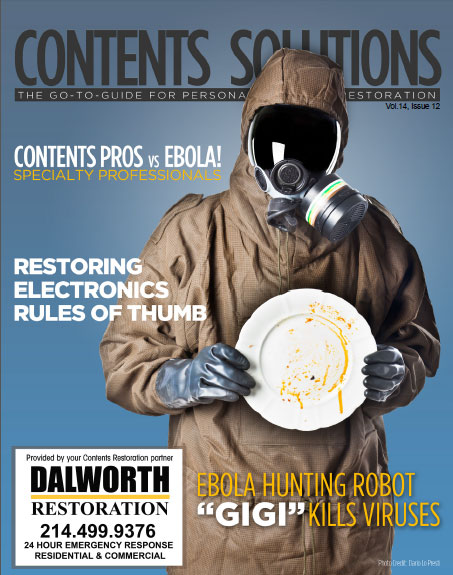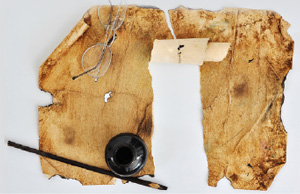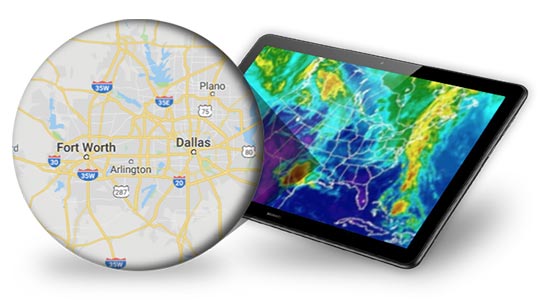24/7 Emergency Services
 December 2014: Can Ebola Be Stopped?
December 2014: Can Ebola Be Stopped?
Contents crews have dealt with hospital clean-ups, sewage back-ups, H1 N1, MRSA, and other potentially lethal bacteria and viruses for decades, but on October 3rd a 15 man team, whom the Associated Press referred to as, the "Cleaning Guys," donned their protective suits and breathing filters, then entered the most talked about apartment in the U.S. - the home of the first person to die in North America from Ebola.
Even among veteran contents pros, the hazmat cleanup personnel are considered to be specialists and not all of the contents restoration front line workers have the training for such tasks- but they know who they are and how to find them.
The Cleaning Guys quickly went to work cutting up the bed, removing contaminated sheets, towels, carpeting, etc., eventually filling about 140 barrels with triple-sealed plastic packages. They had dealt with bloody crime scenes and HIV - and they approached the Ebola-contaminated dwelling the same way they handled all their other assignments.
"It comes down to biohazard training," the company owner said in interview. "The steps and precautions taken are basically the same." Most of the items in the apartment were cleared out, but special items such as passports, a laptop computer, a family Bible and a few other keepsakes were decontaminated and returned to Louise Troh, who had shared the apartment with the stricken man.

A Dallas County spokeswoman stated that the county contacted seven vendors for the task and that "the only vendor that was responsive and met the guidelines" was the Cleaning Guys.
Another reporter, Bob Price of BBTX, asked the owner of the contents clean-up company why his men wore hazmat suits, gloves and other protective gear when earlier a county judge and other county personnel had walked through the same apartment with no protection at all.
The owner responded, ""This is the way we do our job. We go above and beyond to protect our employees. We always go at least one step above what is required."
Not as widely publicized was the fact that the Cleaning Guys were also hired to clean and disinfect the hospital room where the Ebola victim died.
The hazmat contents team had expected the general public to shy away from them for a while-at least until the publicity died down. But the exact opposite occurred.
The team says that when the local citizens recognized their trucks from the news coverage, they approached the workers to thank them for their efforts.
In a related case, the Cleaning Guys were asked to disinfect the home of Amber Vinson, the Dallas nurse who contracted Ebola. But authorities moved in and replaced them with their own hazmat crew. The new crew destroyed many of Amber's personal items, including her engagement ring.
"All you have to do is drop it in a little bleach or any household disinfectant ... that would destroy the Ebola virus," Dr. William Schaffner, an infectious disease expert from Vanderbilt University School of Medicine, told ABC News, adding that destroying the ring went "way overboard."
The Cleaning Guys were contents pros with hazmat training (they know how to save valued items) - the new guys were something else.
It might be surprisingly easy for the contents pros to protect their clients from Ebola.
A recently released OSHA report says, "Disinfectants for Ebola virus ... Use an EPA-registered disinfectant suitable
for non-enveloped viruses (e.g., adenovirus, norovirus, poliovirus) to treat contamination/spills and to disinfect
surfaces ... ) When commercial disinfectant products are unavailable, common household bleach and other
appropriate disinfectants may be effective alternatives."
And the European Centre for Disease Prevention and Control says, "Ebola virus is easily killed by soap, bleach, sunlight, and high temperatures or drying. Machine-washing clothes that have been contaminated with fluids will destroy Ebola virus.
Ebola virus survives only a short time on surfaces that are in the sun or have dried. It can survive for a longer time on clothes or materials which have been stained with blood or other bodily fluids.
So the formidable arsenal of solutions that the contents pros have been using for years that are bactericidal, virucidal, fungicidal and tuberculocidal and 99.99% effective against such notables as H1 N1 , HIV, MRSA, C-DIFF, Salmonella, etc., can be most useful in keeping homes, classrooms, public places (theaters, hotels) and offices safe during uncertain times.
Electronics Restoration

Okay, you already know that contents pros love technology. If there is a new method or gadget or solution that will enable them to finish a job well, restore more valuables and impress the owner, adjuster and agent, they usually embrace it with both hands!
But every so often, for the sake of expediency (and sometimes just good common sense) they use a tried and true "rule of thumb."
For example, let's say that there has been a fire and there is soot and ash all over the home or office's electronics. Water from the fire hoses has left a mist throughout the building and the moisture has mixed with the ash.
Now, the scientifically minded might want to conduct a "wipe test," in which a cloth is literally wiped over the circuit board inside a computer or big screen TV. The cloth is then sent to a laboratory for analysis to discover whether there is hydrochloric acid being formed that will soon damage the connections rendering the electronics useless.
The problem is that while they are waiting for the analysis, the acid is eating away at vital components, and if the test takes any more than two or three days, it may well be too late to save the fragile wires. Contents professionals look at electronics that have been exposed to water and ash, make a decision, then include a cleaning of the components in the estimate that is presented to the insurance adjuster. Normally the contents manager will explain the situation, offer his (her) best evaluation based on the evidence and will proceed to restore the unit unless the adjuster offers an objection.
If further evidence is needed, a simple, inexpensive litmus test (you can get them at pool supply houses) will show different levels of acidity and may be enough to justify an immediate cleansing of the electronics in question.
The contents "rules of thumb" can save a small fortune for the insurance company and is considerably faster {and more effective) than waiting for further analysis!
Contents Pros Don't Use Subcontractors?

Just as the contents specialists create special relationships with the insurance carriers and their representatives, they also make strong attempts to "upgrade" sub-contractors to "associates" Of course, they make sure the subcontractor has the proper insurance, track record and expertise. But as soon as possible they forge links of mutual respect, trust and cooperation.
As an example, contents pros may clean a valued painting after a fire. But with a good relationship, he (she) can call upon a conservator for advice as to how to proceed to save the maximum amount for the insurance carrier by restoring instead of replacing.
In like manner furs, documents, antiques, damaged computer files, taxidermy and many other special items can be saved by forging a strong relationship with other professionals.
A subcontractor may be someone who can perform the job. An associate is someone who wants to see the job completed so well that it reflects in a positive manner on both the contents firm and the work that their coworkers perform. Thus, the relationship can flourish and become even stronger for the next opportunity.
Numerous adjusters have found such relationships with a strong contents team to be equally as beneficial for their company.
EBOLA HUNTING ROBOT
The contents pros are watching a new robot that was introduced to the world on CNN. Her name is "Gigi" and she takes no prisoners. Already 250 hospitals have purchased her "sisters" and they are amazed at just how lethal they are.
These robots emit UV light 25,000 times brighter than the sun, which destroys virtually any virus or bacteria. Thus far, nothing has been able to survive against them. And with eye shields in place, they are harmless to humans. There is even talk of rolling them onto planes with the passengers still in their seats and zapping all manner of contagions into oblivion.
Now they are "gunning" for Ebola. They are still a little pricey, but stand by, the contents pros like what they see!










